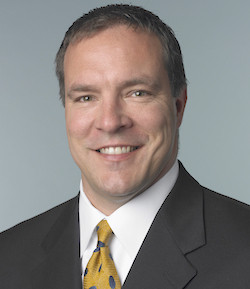Low-latency, high-frequency and algorithmic trading—which were initially focused on the equities markets—are being increasingly deployed fro trading multiple asset classes, including listed and OTC derivatives.
This involves a massive transformation, especially for swaps and other OTC derivatives markets.
As a result of the Dodd-Frank Act (DFA), European Market Infrastructure Regulation (Emir), and other regulatory efforts around the globe, the bilateral paradigm for swaps is being replaced, in large part with a multi-lateral framework, much like the operational and regulatory attributes of the listed derivatives world.
“Trading institutions have to negotiate a far broader menu of connectivity options and requirements to an expanded array of trading platforms, exchanges, matching engines, risk engines, brokers and other solutions,” said Paul Rowady, senior analyst at Tabb Group.
That means that transactions formerly done almost exclusively by phone will now take place electronically, meaning via a data center.
“More and more of the capital decisions, stock and bond trades, FX, etc. are made electronically,” said Terry Rennaker, vice president at Skanska USA Mission Critical Center of Excellence. “This moves the analysis and monitoring of the markets out of the office into the data center.”
Today’s global, multi-asset class and highly fragmented capital markets "simply rely on connectivity as the basic life-blood of the infrastructure,” said Shawn Kaplan, general manager of financial services at Telx. “With the exception of a few market makers or HFT strategies, nearly all firms will place a heavy emphasis on high-performance connectivity.”
Chicago, Chicago
The “futurization” of the swaps industry holds particular implications for Chicago, the hub of U.S. futures and commodities trading.
The major clearinghouses already have a solid presence in the Chicago market, as do major clearing brokers e.g., futures commission merchants, or FCMs) and much of the futures trading infrastructure, analytics and support solutions, noted Rowady.
In carrier hotels such as 111 8th Avenue, 60 Hudson and 350 E. Cermak, “long-haul carriers meet with local carriers who can pull data the last mile, Internet providers peer with each other, and large corporate enterprises set up their rings which can pick up lower-cost connectivity and insulate their backbones from corporate office relocations,” said Kaplan.
"In fact,” he said, “the original financial colocation facilities were not actually the same buildings that housed the matching engines. They were simply the nearest carrier hotels to the engines.”
 Craig Mohan, managing director of co-location, data center services, CME Group
Craig Mohan, managing director of co-location, data center services, CME Group
The CME Group data center in Aurora, outside Chicago, at over 428,000 square feet one of the world’s largest data centers, provides co-location services for connecting to the CME Globex platform using CME GLink, which provides up to 10 Gigabits per second of bandwidth. Customers may use CME Cross Connect to connect to other customers, carriers, or content providers.
CME Globex is itself capable of processing more than 9 billion quotes per month, with an estimated average response time of under five milliseconds, for a wide range of futures and options in interest rates, FX, commodities and equity indexes.
“We recently had a record month for 2012 with 88% of our volume being traded electronically,” said Craig Mohan, managing director of co-location, data center services at CME Group.
“Handling that kind of volume, trading around the clock requires an exceptional data center purpose built to support the growth of our markets,” Mohan said. “Owning the facility gives us tremendous flexibility to support our customers’ needs and to provide access in a fair and equal manner creating a level playing field within the data center.”
Market Data Technology
Timely and transparent communication of that data is vitally important, yet the technology involved in collecting, collating, aggregating and transmitting that data remains complex.
“Market data is obviously the life-blood of the marketplace,” said Justin Llewellyn-Jones, chief operating officer at Fidessa U.S. “One of the largest costs is the network telecommunications required, and independent data centers that house the data provider, the data aggregator and the data consumer are obviously going to markedly reduce those costs and improve the networking capabilities and timeframes.”
MarkitSERV, an electronic trade processing service for OTC derivative transactions, is expanding the connectivity it provides to electronic swap markets, central counterparties (CCPs) worldwide, and trade repositories. “With a connection to MarkitSERV, market participants have efficient and simplified access to key pieces of market infrastructure without having to incur duplicative costs of building and maintaining their own direct connections to CCPs,” said Henry Hunter, head of product management at MarkitSERV.
MarkitSERV connects the global derivatives industry to 12 CCPs that clear credit default swaps, interest rate derivatives, foreign exchange derivatives and equity derivatives, among them CME, Eurex, ICE Clear Credit, ICE Clear Europe, ICE Clear US, Japan Securities Clearing Corporation, LCH.Clearnet, Nasdaq OMX, and SGX.
The insight that can be gained from accessing and managing each of the growing list of hedging products -- including futurized and cleared OTC swaps -- in a highly-automated manner is hard to refute, noted Tabb Group’s Rowady.
“Computational prowess is and will continue to be a requirement here,” he said. It is conceivable, if not highly probable, therefore, that optimized co-location and interconnectivity will quickly become just as important in the new swaps market as it is in any other highly-automated market structure.”














